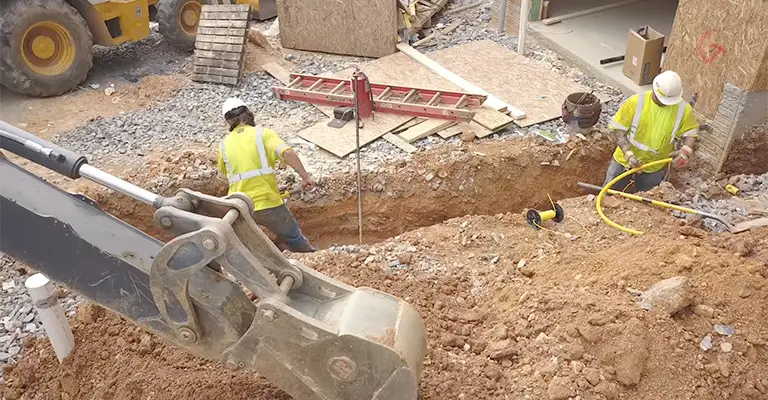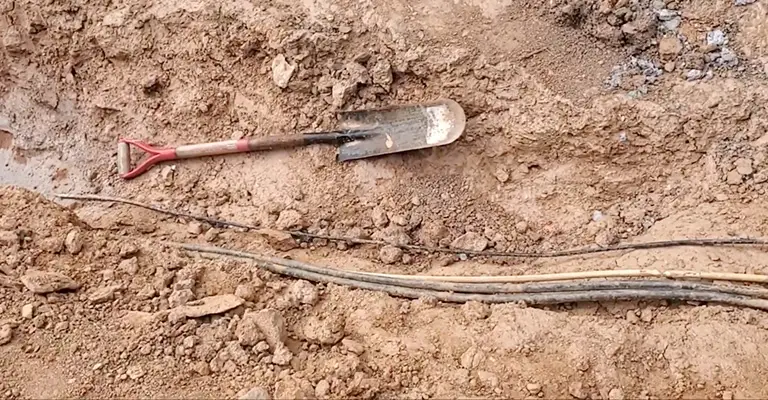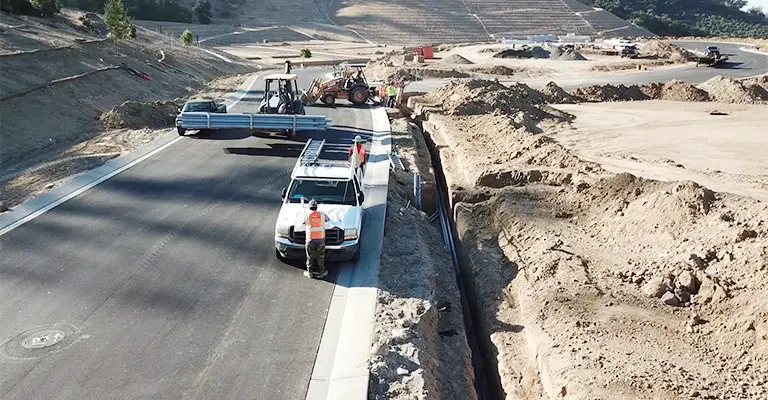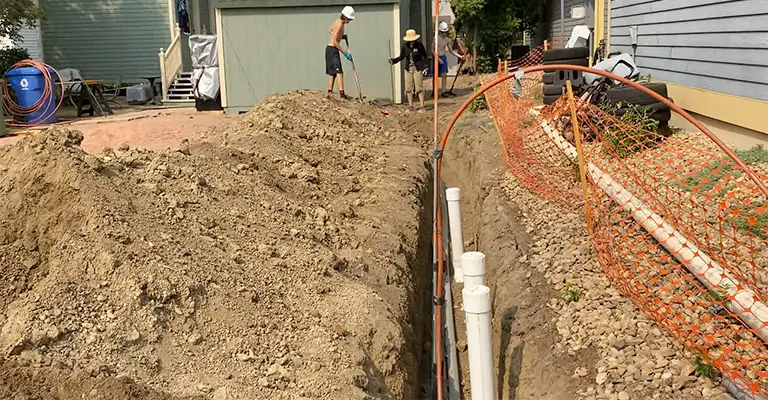When installing utility lines for gas and electricity, one common question arises whether these two essential services can be accommodated within the same trench.
As homeowners, contractors, and utility companies strive to optimize efficiency and reduce costs, the idea of consolidating utility lines seems appealing.
However, concerns about safety, regulations, and potential conflicts between gas and electric systems have given rise to a prevailing myth that these two utilities cannot coexist in the same trench.
A joint trench must maintain the following separations if it is to be shared with other utilities:
- Gas and electric lines should be separated by 24 inches.
- Water and electric lines should be separated by 12 inches.
- The distance between sewer and electric lines should be 24 inches.
- Communication lines and electric lines should be separated by 12 inches.
Usually, both can be in the same trench without breaking any codes. In my experience, most utility companies prefer horizontal separation (usually 24″), which means a wider trench.
Safe Practices For Running Electric And Gas In the Same Trench

Crossing in the same trench can pose an unexpected danger for gas and electric lines. Following are some tips you can follow to make this practice safer:
#1
Don’t try to install the lines yourself. Consider hiring an expert to review your situation. As a result, they will determine whether or not the project is viable.
It is also a safe bet that they will create a plan to avoid interfering with the operations of the other utilities around you.
#2
It is essential to consider the depth, particularly for homes with plumbing lines. Even though it is feasible to run water, gas, and electricity lines near each other, it is not recommended.
#3
There should be a deeper water pipe than the gas and electric lines. Set your goal at 18 inches. Ensure that the faucet is moisture-resistant. Nevertheless, tarping the lines and their conduits will increase their lifespan.
#4
Check the trench thoroughly for leaks before covering the trench with utility lines or gas lines. Putting everything back together shouldn’t require tearing apart your yard.
Be sure to inspect your work before declaring the installation successful. You will be discouraged from twisting and stretching the electric cables.
#5
Be sure to keep a 24-inch distance. In order to prevent contact between gas and electric lines, it is safer to do so. Some people won’t be concerned about this problem since the wire has a sheath protecting the conductors.
It is, however, possible for this sheath to wear away. This problem also affects conduits. It is possible to overwhelm them due to factors such as pressure and pests.
#6
Consider buying a pipe with multiple compartments if you need a single conduit. Homeowners often run electric and gas lines through the same tube to conserve energy.
The use of a joint-trench conduit can achieve the same result while keeping the gas and electric lines distinct.
#7
Make sure conduits are weather-resistant. A pipe can be corroded to the point where it exposes the lines inside if extreme conditions occur. Moisture cannot penetrate a weather-resistant tube. A few conduits can withstand pest attacks.
#8
In as many cases as possible, keep the lines in separate pipes. The PVC conduit can probably be used, especially if you have the same one. Nevertheless, separate tubes are the safer choice.
As well as this, the contractor is familiar with the local laws. Their job will be to ensure your project complies with the local regulations.
Depending on the region, gas and electric lines cannot be installed in the same trench without a permit.
Code For Gas And Electric In Same Trench

It would make sense for the law to frown upon such behavior. There are instances when this may not be true. It is ultimately up to your local authorities to create a distinct electric code as they see fit.
Regulations and rules of the country do not apply to them. This is why you must check the local rules before taking action. Even if your local regulations do not restrict this practice, you’re not out of the woods.
Please contact your service provider. In most cases, they will ask you to separate the electric and gas lines. The majority of them won’t compel you to take their advice.
Most people are free to run electric and gas lines in the same trench. A person shouldn’t just do something because they can, as it isn’t always wise.
There is no technical risk involved with this practice. Several utility companies tunnel through the same trench to run gas, electric, and water lines.
There is a need to be concerned about the safety of the pipes. Does the insulation need to be replaced if it is eaten by pests? Electric lines can energize gas pipes if they touch, which would be problematic.
You might have noticed that some contractors seem hesitant to use conduits whenever you ask them. Keeping the lines separate is one of the reasons conduits are attractive.
It does not matter to some homeowners whether they use the same conduit for both lines or not. Using the same pipe places the lines close together, not realizing they are connected.
A problem with indoor settings is less likely to occur. For example, having gas and electricity run along the same paths through the walls or ceiling won’t alarm your contractor.
As a result of not dealing with severe conditions, the insulation stands a greater chance of lasting longer.
It doesn’t make this practice safe, however. A problem with overheating can arise as a result of inadequate ventilation behind a wall or ceiling. Fire can be started if there is wood on the wall or ceiling.
There are a lot of problems involving running electric and gas lines in the same trench. Nevertheless, taking specific steps can prevent this practice from becoming unsafe.
What Utilities Can Be In The Same Trench With Electric And Gas?

You can connect many lines to the trench, including gas, phone, electricity, and cable. Make sure you speak to your service provider. As a result, they will advise you accordingly.
There is a possibility that some might reject the idea of placing multiple utilities in the same trench. The time you save, and resources you can save if they agree can be very substantial.
How Far Should A Gas Pipe Be From Electric?
Ensure that the gas and electric lines are separated by 24 inches. Assuming they will stay in the same trench, you do this. As well as water lines, sewer lines must meet these measurements.
When digging trenches, it is ideal for maintaining a 12-inch separation between water pipes and electric lines.
Final Words
It is indeed feasible to share the same trench with gas and electric utilities with proper planning, compliance with regulations, and the use of advanced technologies.
Our investigation debunks this myth, giving us new ways to improve utility installations, promote efficiency, and reduce costs.







